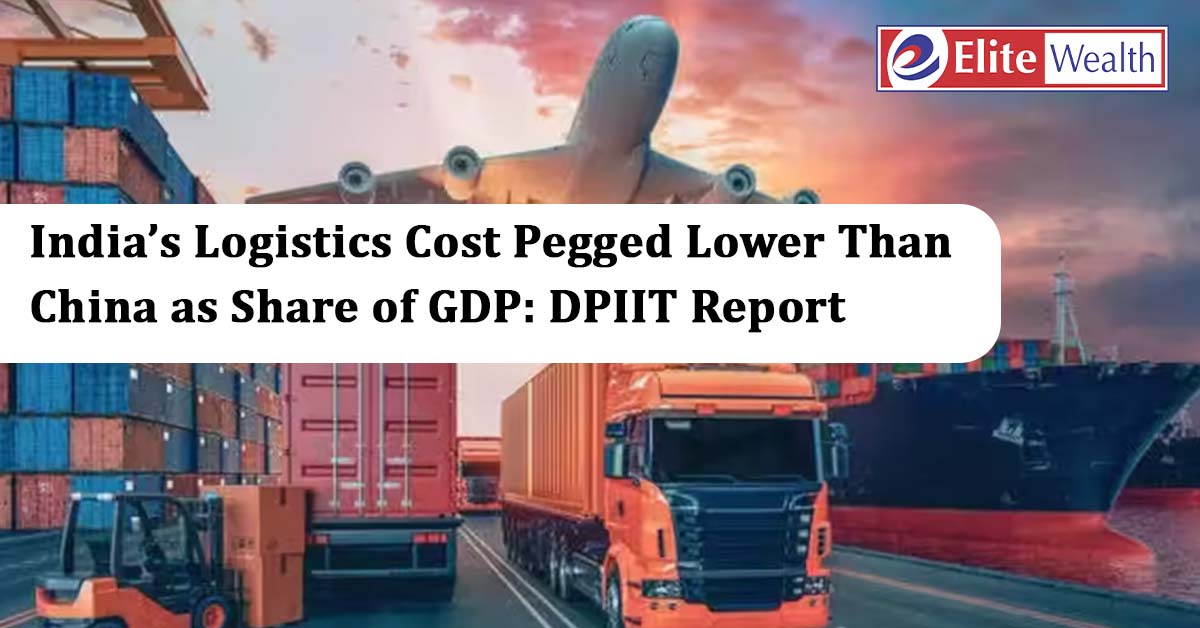
India’s logistics costs are significantly lower than previously believed, according to a new study released by the Department for Promotion of Industry and Internal Trade (DPIIT). The report estimates India’s logistics cost at 7.97% of GDP in FY24, much below the commonly cited 13–14% range, and lower than China’s 14.4% of GDP in 2023. For comparison, logistics costs account for 24% of GDP in Indonesia and 8% in South Korea.
The findings are based on a study by the National Council of Applied Economic Research (NCAER), titled “The Assessment of Logistics Cost in India.” This is the country’s first scientifically derived estimate, using a hybrid approach that combines secondary data with nationwide surveys.
Cost Comparison by Mode of Transport
The report highlights a sharp disparity in costs across transport modes. Rail remains the most economical option at an average cost of ₹1.96 per tonne per km, while road transport is nearly six times costlier at ₹11.03 per tonne per km. Air transport, despite its speed, is prohibitively expensive at ₹72 per tonne per km—over 36 times higher than rail.
For non-services sectors such as agriculture, mining, and manufacturing, logistics costs average 9.09% of output. Certain bulk commodities like iron ore, coking coal, pig iron, petroleum products, and steel face higher-than-average costs due to the need for specialised wagons, bulk-handling facilities, and stricter safety protocols.
Clearing Misconceptions
The DPIIT noted that earlier estimates of 13–14% of GDP were largely based on external studies or incomplete datasets, which often led to inconsistent figures and confusion among both policymakers and international stakeholders.
Recommendations for Improvement
To further reduce costs, the report recommends a range of infrastructure and policy measures, including:
- Expanding Dedicated Freight Corridors to ease congestion.
- Modernising and upgrading railway infrastructure.
- Deploying technological solutions like GPS tracking, automation, and digital platforms for safer and faster cargo handling.
- Promoting green energy and fuel-efficient vehicles.
- Building multi-modal logistics parks, freight consolidation centres, and truck-only lanes.
- Developing cargo-friendly airports in Tier-2 and Tier-3 cities.
- Enhancing inland waterways through deeper navigation channels and multi-modal terminals.
Gradual Progress in Recent Years
The report also points to a slowing pace of logistics cost growth over the past five years, attributing this improvement to flagship government initiatives such as the PM Gati Shakti Master Plan, Dedicated Freight Corridors, the Sagarmala project, integrated checkposts, and the Unified Logistics Interface Platform (ULIP).
By offering a clearer and more accurate picture of India’s logistics landscape, the report is expected to strengthen policymaking, improve investor confidence, and support India’s competitiveness in global trade.
Disclaimer:
This article is intended solely for educational and informational purposes. The securities or companies mentioned are provided as examples and should not be considered as recommendations. Nothing contained herein constitutes personal financial advice or investment recommendations. Readers are advised to conduct their own research and consult a qualified financial advisor before making any investment decisions.
Investments in securities markets are subject to market risks. Please read all related documents carefully before investing.
